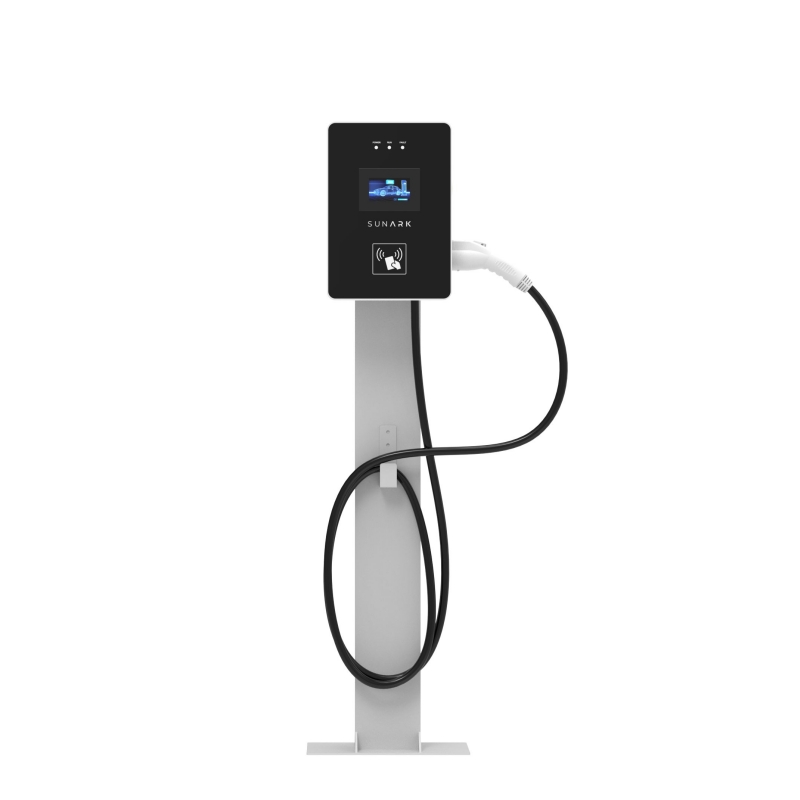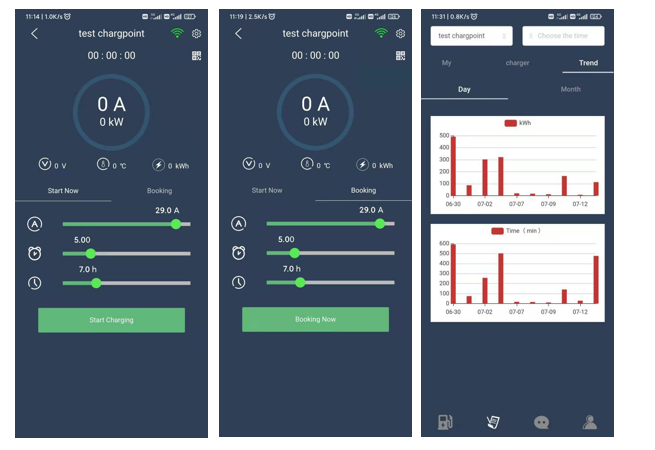the use of EV chargers is essential for the successful adoption of electric vehicles. They provide the necessary infrastructure for recharging EVs, making it convenient and practical for people to utilize electric transportation and reduce dependence on fossil fuels.
Standard:
SAE Standard / IEC StandardConnector type:
Type 1 / Type 2Connector Mechanical Operating Life:
≥10000 times
The market for EV chargers has experienced significant growth over the past few years as electric vehicles (EVs) become more popular. The increasing adoption of EVs has created a demand for charging infrastructure, leading to a rapidly expanding market for EV chargers. Here are some key points about the market:
1. Residential Chargers: Many EV owners prefer to charge their vehicles conveniently at home. As a result, residential chargers, also known as Level 2 chargers, are in high demand. These chargers can be installed in garages or parking spaces and provide faster charging compared to a standard household outlet.
2. Public Chargers: Public charging stations are crucial for EV users who need to charge their vehicles on the go. These chargers are often found in public parking lots, shopping centers, restaurants, and other locations. Public chargers can be Level 2 chargers or DC fast chargers, offering different charging speeds.
3. Workplace Chargers: Employers are increasingly installing chargers at workplaces to support their employees' transition to electric vehicles. Workplace chargers provide a convenient charging option during working hours and help alleviate range anxiety for EV owners.
4. Government Initiatives: Many governments around the world are promoting the adoption of electric vehicles by implementing policies and incentives. These include grants, tax credits, and subsidies for installing EV chargers, both for residential and public use. Such initiatives are driving the growth of the EV charger market.
5. Charger Manufacturers: Various companies specialize in manufacturing EV chargers, including well-known brands such as Tesla, ChargePoint, and EVBox, as well as many smaller players. These companies offer a range of charging solutions, including hardware, software, and network management systems.
6. Charging Networks and Services: To enhance the charging experience, charging network operators provide services like mobile apps, online payment systems, and real-time charging station availability information. These networks facilitate seamless access to a wide range of charging stations and help expand the charging infrastructure.
7. Future Opportunities: With the continued growth of the EV market, there are opportunities for innovation and improvements in EV charging technology. This includes advancements in charging speeds, wireless charging, vehicle-to-grid integration, and smart charging solutions that optimize energy consumption and grid stability.
Overall, the market for EV chargers is booming, driven by the increasing adoption of electric vehicles and the need for a reliable and accessible charging infrastructure. As the EV market continues to expand, the demand for EV chargers is expected to grow rapidly, presenting significant opportunities for businesses operating in this sector.

How to use an AC EV charger?
Choose the right charger: Ensure that you have a compatible EV charger for your vehicle. Different electric vehicles may have different charging port types or require specific charging standards (e.g., Level 1, Level 2, or DC fast charging).
Locate a charging station: Find a suitable charging station near you. This can be done through various online resources, mobile apps, or navigation systems that provide charging station maps and real-time availability information.
Park your vehicle: Park your electric vehicle in the designated spot at the charging station. Make sure your vehicle is within reach of the charger's cable.
Check the charger: Inspect the charging station to ensure it is in working condition and properly maintained. Look for any visible damage to the equipment or cables.
Connect the cable: Depending on the charging standard, connect the appropriate cable to your electric vehicle's charging port.
Start the charging session: Many charging stations require authentication or payment. Follow the instructions provided on the charging station or the accompanying mobile app to start the charging session.
Monitor the charging process: Once the charging session begins, monitor the charging progress. Most chargers have a display that shows the charging rate, battery level, and charging time.
Disconnect and end the session: When your vehicle's battery reaches the desired charge level or when you're ready to leave, stop the charging session.

How to use DC charge station?
Check compatibility: Ensure that your electric vehicle is compatible with the DC charger and the specific charging standard it supports (e.g., CHAdeMO, CCS, Tesla Supercharger).
Inspect the station: Assess the charging station for any visible damage or signs of malfunction.
Connect the cable: Lift the charging connector, which is often attached to a cable, and insert it into the vehicle's charging port.
Follow station instructions: Look for any instructions or prompts displayed on the charging station's screen, if available.
Start charging: Once the connection is established and any required authentication is completed, the charging session should automatically start.
Wait for completion: The charging process may take anywhere from a few minutes to an hour or more, depending on the battery capacity, charging speed, and required charge level. Use this time to take a break, run errands, or relax nearby.
End the session: Once the desired charge level is reached, or you no longer need to charge, follow the instructions on the charging station to stop the charging session properly.
Disconnect and secure the cable: Once the charging session is stopped, unplug the charging connector from the vehicle's charging port.

How to monitoring the EV chargers?
Centralized Monitor System: EV chargers can be connected to a centralized monitoring system that allows operators or administrators to remotely monitor the charging status, energy consumption, and any faults or abnormalities of the chargers.
Mobile Applications: Many EV charger manufacturers provide mobile applications that allow users to monitor and control the charging process.
Website: Some EV charging networks offer web portals where users can log in to monitor their charging sessions, view charging history, and access other relevant information.
RFID or NFC Card: EV chargers can be equipped with RFID (Radio-Frequency Identification) or NFC (Near Field Communication) card readers.
Display Screens: Many EV chargers have built-in display screens that show real-time charging information, such as charging power, charging time
The EV charger market is rapidly evolving as the adoption of electric vehicles increases. There is a growing infrastructure of public and private charging stations to support EVs, and more companies are entering the market to provide charging services and develop innovative solutions to meet the charging demands of electric vehicles.
FAQs:
Q1: Do you support OEM/ODM?
A:Definitely, OEM&ODM service is supported with a certain quantity,including customize logo,package and label;
Q2: What's the production time?
A: The production time is normally 15 working days. but we will always prepare some stocks for popular models.
Q3: Can you provide DDP service?
A:Yes, if you are a personal customer and don't want to deal with the customs, we can provide DDP service to your address.
Q4: What about the warranty and how to claim?
A: Warranty period are 5 years since you receive the product, our professional after-sales team will deal with all warranty issues.